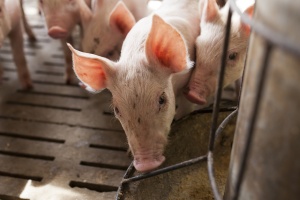Benefits of Beef: 10 Facts Farmers Want You To Know
The benefits of beef start with the Illinois cattle farmers who produce the red meat we serve our families. When enjoyed as part of a balanced diet, beef meat offers many health benefits. Pair that with the work local farmers are doing to raise beef responsibly and you’ve got a meal you can feel great about.
When it comes to beef benefits, here’s what local farmers want you to know:
- The recommended serving size for lean red meat is just 3-4 oz., which translates to the size of a deck of cards. Farmers understand the need for moderation and want you to stay healthy. Beef benefits us by providing big nutrients in small servings.
- A 3-oz. serving of red meat provides us with half the recommended daily protein intake our body needs, and is an excellent source of Vitamin B6 and B12 (energy boost!) and zinc (maintains the immune system).
- Ground beef benefits your blood, ranking third for foods that have the best source of iron. And get this, ground beef actually has eight times more Vitamin B12, six times more zinc and two and a half times more iron than chicken.
- There are more than 50 different cuts of meat on a cow. The five most popular among Americans are chuck pot roast, top loin steak, top round steak, top sirloin steak, and t-bone steak.
- Meat comes with all kinds of labels, including grades: USDA Prime, Choice and Select. All have to do with mouth-watering characteristics like tenderness, juiciness and flavor:
- Prime refers to beef that comes from young cows and has significant marbling (fat), which makes it good for grilling and broiling.
- Choice beef has less marbling than Prime, and works well for braising and roasting.
- Select beef is tender-ish, but has less marbling than either Prime or Choice, which makes it good for marinating.
- Beef has to be inspected by the USDA before going to market, so you should always see a “USDA-inspected” label on beef products.
- Steak has healthy and unhealthy fats. The fat in the marbling or white specks of your steak is actually monounsaturated, which is the “healthy fat.” The unhealthy fat is on the outside of your steak and is normally trimmed off.
- Sometimes, beef cattle are treated with growth hormones to increase efficiency. That being said, the difference between a steak from an animal treated with these hormones and one from an animal who was not is 0.6 nanograms of estrogen. To give you a reference point, a baked potato has 225 nanograms of estrogen and a birth control pill has nearly 30,000 nanograms of estrogen. Learn more in this farmer’s explanation of hormones in beef.
- Cattle have strict diets. A dedicated cattle nutritionist (yes, you can specialize in that) creates a very specific feed recipe for cattle. Farmers and veterinarians are working to reduce the need for antibiotic use in cattle by focusing on good nutrition and the use of vaccines to prevent illness and disease. Healthy beef benefits everyone.
- All beef is free of antibiotics before it hits grocery store shelves. When antibiotics are needed, farmers must follow a strict withdrawal period to ensure the antibiotics are cleared from the animal’s system before being sent to market.
Still curious about beef’s nutritional value? Get a nurse’s perspective on beef’s role in a healthy diet.










0 Comments